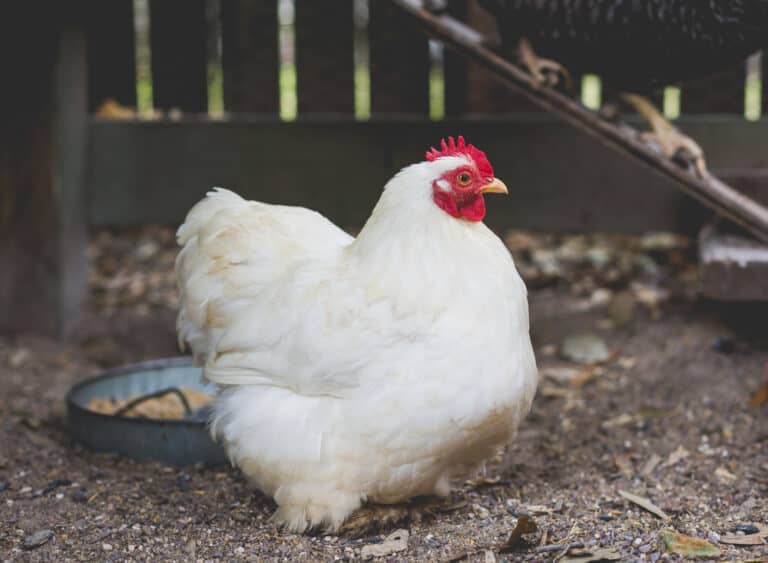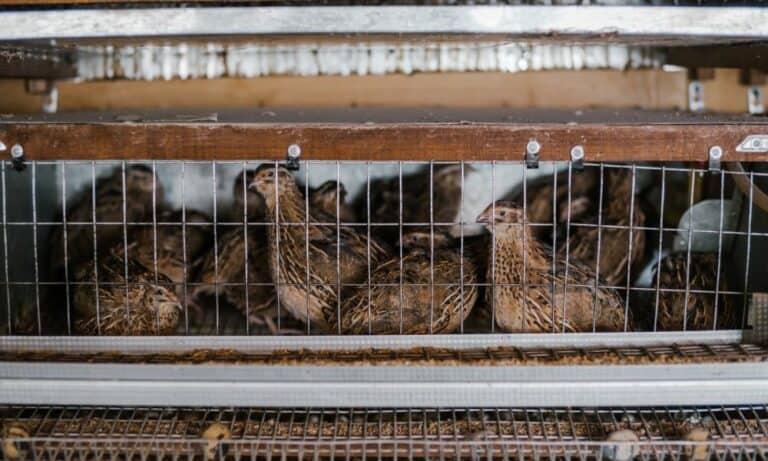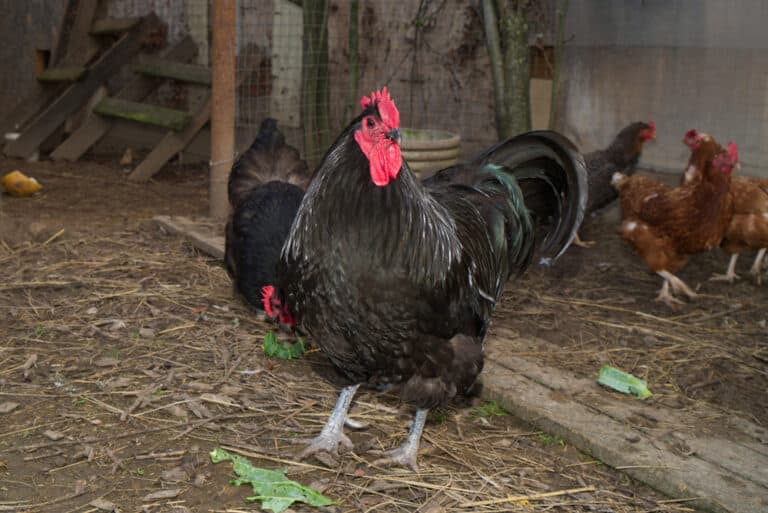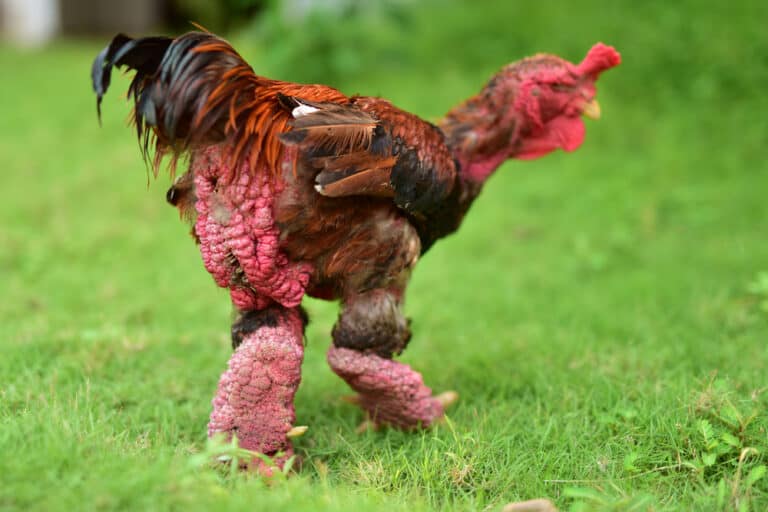The Cream Legbar originates from Britain and the breed arrived in the United States only twelve years ago. It has been recognized as a breed in the UK since 1958 but hasn’t been officially recognized in America yet. However, its unofficial status hasn’t stopped the interest in these chickens laying blue eggs.
Perhaps you have heard lots of positive things about the Cream Legbar and are now considering adding them to your flock. But how to decide if the Cream Leagbar is the right breed for you?
With the information in this article, which covers everything from appearance to personality, we can help you decide. So continue reading to learn key facts about the Cream Leghorn.
History of Cream Legbar Chickens
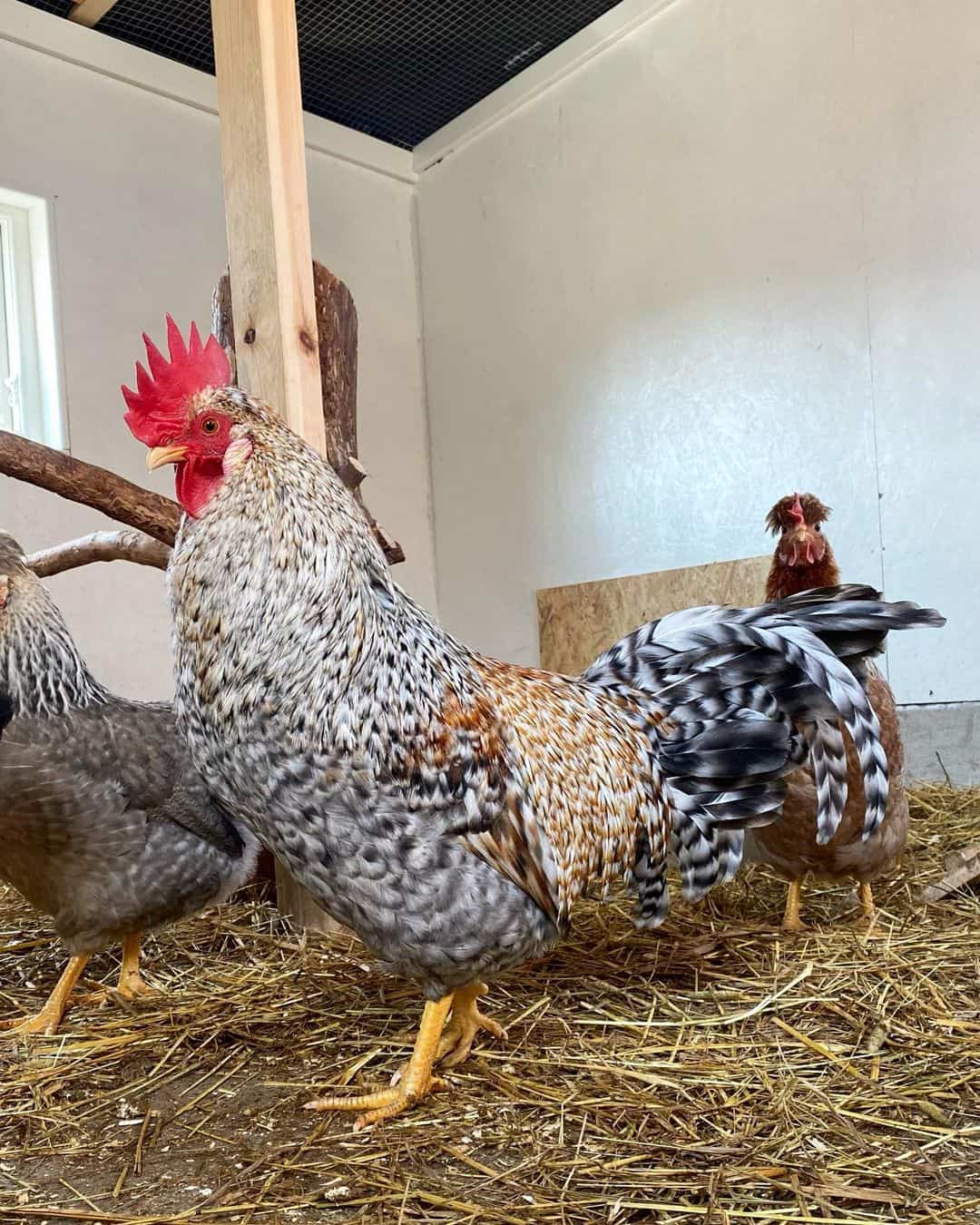
The origins of the breed date back to England in the 1930s when Professor Reginald Punnett from Cambridge University was given some Araucana chickens by the horticulturist Clarence Elliott who had brought them from South America. Punnett was very interested in this chicken that lay blue eggs and began to crossbreed it with European chicken breeds.
At the same time, Professor Michael Pease, who was Punnett’s former colleague, was also working on a chicken-breeding project. Whilst working independently, the two men each produced a cream-colored chicken. When they crossbred their chickens, the Cream Legbar breed was born.
First introduced to the public during the 1947 London Dairy Show, the breed roused a lot of interest. However, it took over ten years for it to be officially recognized by the Poultry Club of Great Britain. Although the breed had attracted a lot of attention at first with their blue eggs, the public didn’t take to the unusual color and the breed almost died out in the 9170s.
However, interest in the breed was later revived and many stores began to sell the blue eggs, labeling them as “upmarket” eggs. Today, the Cream Legbar breed is popular in many countries, and the United States Cream Legbar Club is campaigning to get them recognized in the US.
How to Identify Cream Legbars
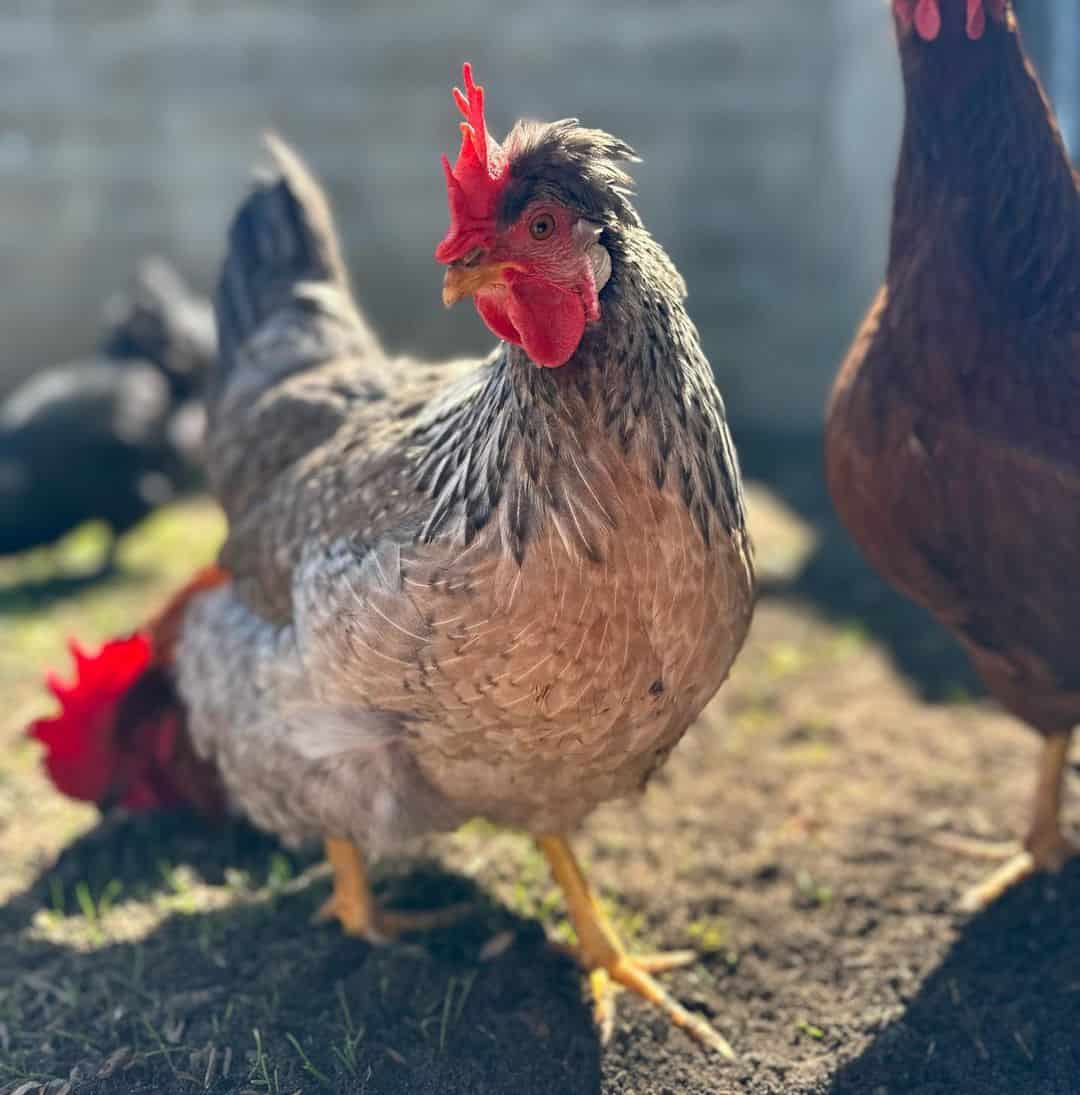
badhensclub
The Cream Legbars are categorized as light fowls. The hens weigh around 6 lbs and the roosters 7.5 lbs. They have long, flat backs and triangular bodies with long necks and full breasts. The Cream Legbars’ shoulders are broad and their backs have a slight slope. The roosters will hold their tails at an angle of 45 degrees.
Both sexes have cream or white earlobes. Their eyes are reddish bay and beaks that curve slightly downward are yellow or horn-colored. Their wattles and combs are red. One of the more noticeable features of the breed is the crests on their heads. Males have larger crests, while in females they can flop to one side.
Although the name of the breed, Cream Legbar, suggests a cream color chicken, they are actually a combination of cream with shades of gray. The feather pattern, called barring, is more obvious on the rooster’s tail and breast and in the hens, it is more subtle and often salmon color.
Identifying Male and Female Chicks
Telling the male and female chicks apart is easier with Cream Legbars compared to many other chicken breeds because they are an auto-sexing breed. This means the male and female chicks have different appearances as soon as they hatch. In comparison, chicks from many other breeds look identical until they mature.
Auto-sexing is useful when you are buying chicks and you only want to get hens or roosters. Because the Cream Legbar chicks have features typical of their gender as soon as they are born, you can be sure you only get the gender you want.
The best way to check the gender is by looking at the chick’s back. If it is a male, it will have a pale dot on its head while a female will not. You can also identify the female chicks from the more distinct stripe in the middle of their backs. You can see their differences clearly in this video.
Personality
The Cream Legbars are a breed that likes to free range and enjoy foraging for food to add to their diet. They are docile and friendly but also curious and love to explore their surroundings.
They are very aware of their environment and very good at spotting predators. However, the downside of their alertness is that they can be a little jumpy and think that anything they are unfamiliar with is a danger to them.
The hens in this breed are not known to be very broody, which is the result of their breeding. Roosters can be more aggressive than other breeds and often have a high instinct to protect the hens. The aggressiveness is at its peak during mating season.
Egg Production
The Cream Legbars are a good option for anyone looking for hens that are reliable at producing eggs. Your Cream Legbar hens will give you four eggs per week on average, which works out to approximately 230 eggs in a year. They produce light blue, medium-sized eggs. Like many other breeds, they may produce fewer eggs in the winter.
What to Feed Cream Legbars
Mature Cream Legbars will need to be given feed pellets with 15-19% of protein. It is important to feed them all year round, even in the summer when they forage for their food. Giving them ready-mixed chicken feed will ensure that they get all the nutrients they need. You also need to make sure your chickens have access to fresh water at all times.
Setting up the Coop for Cream Legbars

When setting up the coop, follow the rule of four square feet for each chicken. This is the general rule for most chicken breeds. When they are roosting, they need about twelve inches each. You might find them using less of the space in winter when they huddle close to keep warm and more in the summer when they spread out to keep cool.
Outside Space
Because the Cream Legbars are docile and have a friendly temperament, they do not mind living in a confined space for a short time. However, they are likely to become restless if they are confined for too long and cannot get out and forage for food.
You should provide your Cream Legbars with plenty of spaces to explore and let them forage freely. Ideally, let them free range as this will keep your chickens happier. However, if this is not possible, you need to make sure the chickens have roughly ten square feet of run space each.
Looking After Cream Legbars
The Cream Legbars, which are a healthy and hardy breed, are not known for their health issues. However, there are some things you should be aware of when having Cream Legbars in your flock.
During cold winter months, Cream Legbars can get painful frostbite. To prevent this, ensure the chicken coop is kept dry and warm. They can also get parasites in their feathery crests. To keep your chickens free of parasites such as lice or mites, check and clean them regularly.
Being active foragers, the Cream Legbars will eat pretty much anything they find on the ground. Therefore, you need to ensure their foraging area is clear of anything hazardous they could eat.
When introducing young chicks from crested breeds to adult hens or roosters, you always need to be careful. If the older chickens peck the young ones on the head, it could cause brain injury.
Should You Get Cream Legbars?
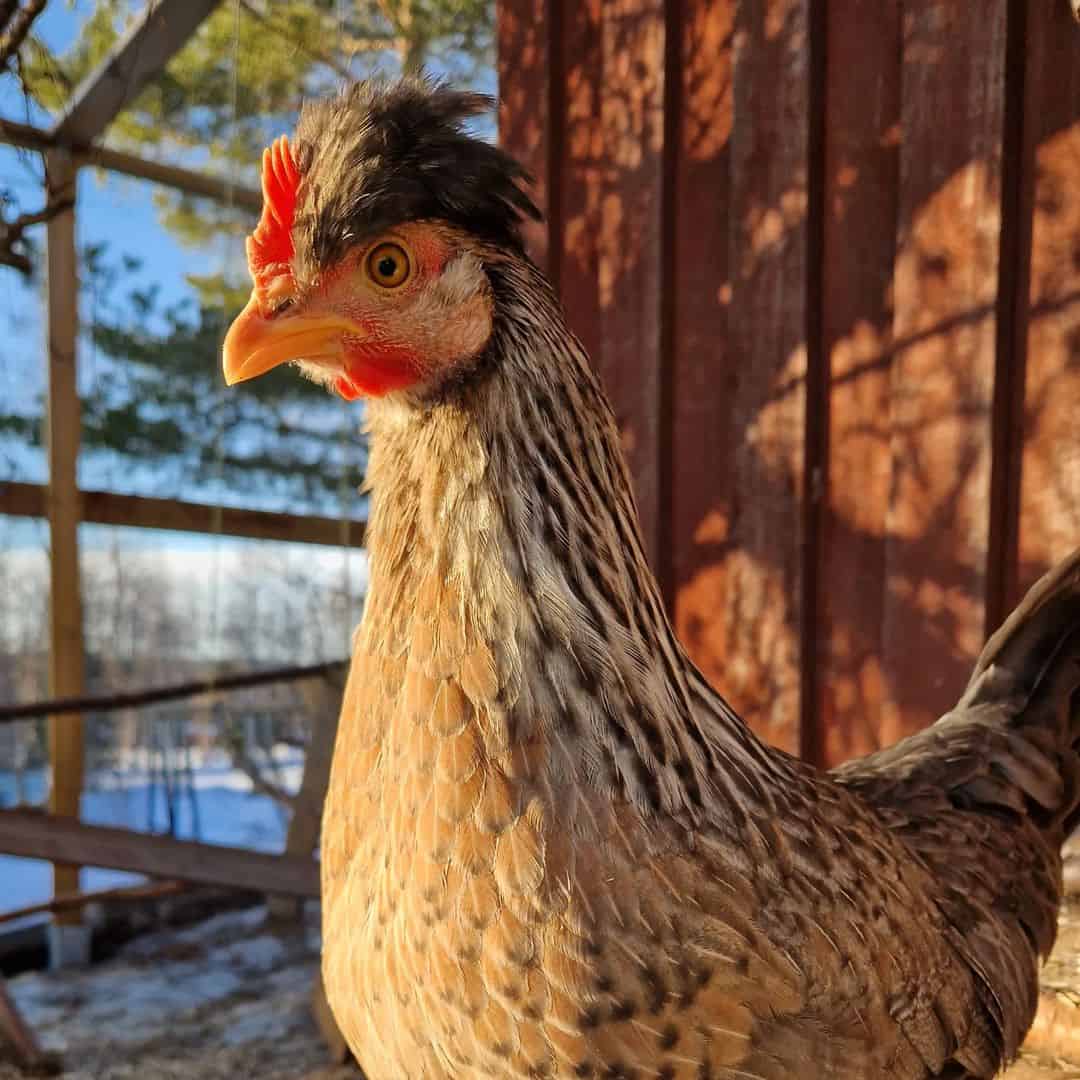
The Cream Legbars are a fairly low-maintenance breed. They have no serious health issues and have good egg-laying abilities. Because they are docile, they can get picked on when they are in a mixed flock, so it is better to keep them with other non-aggressive and docile chicken breeds.
Because the Cream Legbars can become difficult to handle and flighty if they are kept in confinement for extended periods, you should only get them if you can provide them with the space they need. Happy hens are healthier hens and better egg producers.
Even if you are going to let your chickens roam free in your backyard or garden, you still need to ensure there is enough space for the number of chickens you want to have. Otherwise, you may end up with an over-foraged garden as they will dig everywhere to find food.
If you are getting a Cream Legbar rooster, keep small children away from it until you know what its personality is like. This is especially important when it is the mating or breeding season as they can become quite aggressive and protective of their flock.
Conclusion
If you are looking for a chicken breed that will give you around four eggs per week and is easy to look after, then the Creamy Legbar is a breed to consider. However, you need to make sure that you have plenty of space to keep these keen foragers happy and healthy.
Hopefully, you now have a better understanding of the Cream Legbar breed and whether it would be a suitable chicken for you. If you have anything else you would like to ask about this breed, you can write your questions in the comments section.


